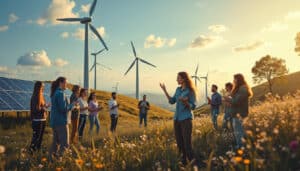Anthony Albanese announced that Australia will communicate its emission reduction targets for 2035 during the next year. While the country has set an ambitious goal of reducing its emissions by 43% by 2030, Albanese emphasizes the importance of this target before 2035. Currently, Australia’s target for 2030 is clear: to achieve 82% renewable energy and reach carbon neutrality by 2050. The Prime Minister highlighted that the strategy to achieve these results is well-defined. In the meantime, the development of details regarding 2035 will take into account various factors, including recommendations from the Climate Change Authority.
The Australian Prime Minister, Anthony Albanese, announced that Australia will present its emission reduction targets for 2035 “next year.” This suggests that the government may delay setting this target until after the federal elections. Currently, Australia aims for a 43% reduction in emissions by 2030 and a carbon neutrality goal by 2050, with 82% renewable energy by 2030. The country must submit its 2035 target as part of the Paris Agreement. The Chair of the Climate Change Authority, Matt Kean, indicated that its recommendations have been delayed to examine the implications of Donald Trump’s election in the United States.

Anthony Albanese’s Statement on Emission Reduction Targets
The Australian Prime Minister, Anthony Albanese, announced that Australia will unveil its emission reduction targets for 2035 during the next year. This announcement raises discussions about the potential delay of this commitment until after the federal elections. Currently, the government is focusing on its goal of a 43% emission reduction by 2030, aligning with its commitment to achieve 82% renewable energy by the same date. Albanese reaffirmed that voters clearly understand the government’s plan and the means to achieve it, highlighting the long-term goal of carbon neutrality by 2050.
The Political and Environmental Stakes in Australia
Albanese’s announcement comes in the context of the Apec summit where climate issues have been central, and at the time of the COP29 summit in Azerbaijan. The debates on emissions in Australia are intensified by Donald Trump’s replacement in the presidency of the United States and discussions about the promotion of nuclear energy by the Liberal Party leader, Peter Dutton. Many stakeholders are calling for alignment with the UK’s climate ambition, which aims for an 81% reduction by 2035. Political and environmental observers expect Australia to take concrete measures at the next COP to alleviate concerns regarding its commitment to climate change.
The Future of Australia’s Climate Targets
Questions remain about Australia’s timeline for submitting its targets for 2035 under the Paris Agreement, especially with electoral uncertainties at play. Although the Albanese government has already laid solid foundations with its current 2030 targets, recommendations from the Climate Change Authority suggest that an ambitious reduction of between 65% and 75% could be achievable for 2035. As discussions about the necessity of increasing the share of green energy continue, the Australian industry is preparing for this major transition, supporting initiatives such as the energy efficiency standard project for electric vehicles and investment in green manufacturing. Ongoing developments signal a crucial turning point for the Australian energy landscape in the coming years.
Articles similaires
Thank you!
We will contact you soon.














